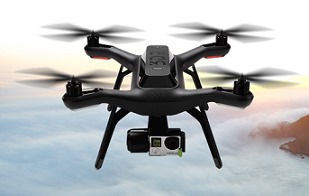사람마다 멀티콥터(Multicopter)를 즐기는 방법은 크게 2가지가 있습니다.
● 레저활동으로 다이나믹한 조종비행과 고공촬영을 즐기는 매니아 층
● 멀티콥터를 직접 제작부터 비행까지 취미생활을 영위하는 매니아 층
자신이 단순히 레저활동으로 비행을 즐기고 촬영을 감상하는 매니아 층이라면 Flight Controller(FC)를 포함한 상업용 완전한 기체(RTF)를 구입하여 바로 비행에 나서는 것이 시간을 단축시키는 길입니다. 그러나 Flight Controller의 구성(GPS 등) 및 펌웨어(Firmware) 등을 수정하며 조립과정에서부터 비행까지 직접 관여하며, 프론티어 정신에 비중을 두는 매니아 층이라면 완전한 기체(RTF)보다는 반조립 기체(ARF)에 자신이 직접 제작한 Flight Controller 등을 탑재하길 원할 것입니다.
만일 후자의 경우라면 전자와 다르게 고려해야 될 것이 많이 있습니다. 대부분의 상업용 기체는 Rock solid한 반면에 자작용 기체는 유연하지만 안정성이 떨어질 수 밖에 없다는 것입니다. 'Rock soild'라 함은 제조사에서 무수한 시행착오로 고도로 최적화되어 있어 안정한 비행이 가능하다는 것이고, 후자는 하드웨어적 유연성으로 인해 혹은 여러 부품과의 호환성으로 인해 안정성은 결국 유저 자신의 몫이라는 것입니다.
하지만 후자의 경우 여러 장점도 있습니다. 상업용 기체는 안정성을 담보로 로열티에 대한 댓가를 치루어야 합니다. 즉 비싸다는 것입니다. 그러나 후자는 기체만을 구입하고 Flight Controller 등은 Open source 이기에 저렴하다보니 조립하는 것이 [반드시 그렇지는 않지만] 싸질 수 있다는 것입니다. 자신의 드론(Drone) 제작에 앞서 드론을 정복하기 위해서는 많은 관련지식과 시행착오를 겪어야 하며 때론 추가의 비용과 많은 시간이 걸릴 수도 있다는 것을 기억해야 합니다.
멀티콥터를 제작하려면 우선 Flight Controller를 선택해야 합니다. Open source로는 크게 Multiwill와 APM 시리즈가 있는데 두터운 사용자 층을 고려한다면 Multiwill가 추천되는 추세입니다. 이는 Community가 보다 활성화되어 있어 조립과정 중에 혹은 기체 셋팅 중에 발생할 수 있는 문제를 쉽게 해결할 수 있다는 것입니다. 기타 Open source를 골라야 한다면 원론적으로 메인 칩셋부터 확인해야 할 것입니다. 왜냐면 단적으로 STM시리즈의 마이크로컨트롤러(Microcontroller)에 익숙하지 않다면 수정은 고사하고 코드를 읽기조차 힘들기 때문입니다.
Multiwill은 Community에서 지속적으로 업데이트되고 있으며 포럼에서 많은 도움을 받을 수 있으며 코드의 수정과 업로드하는 과정을 간단화시킨 근래의 아두이노(Arduino) 환경에서 쉽게 개발할 수 있기 때문입니다. 게다가 메인 칩셋은 Atmel사의 칩으로 C언어로 최적화가 잘되는 마이크로컨트롤러로 알려지며 폭넓게 사용되고 사용자 층이 넓기 때문입니다.
어떤 매니아는 ESC조차도 자작을 시도하는데 이 경우를 제외하면 기체는 Brushless 모터를 포함한 프롭과 ESC, 프레임을 모두 갖춘 보급형 퀴드콥터 기체가 입문자로서 적당할 것입니다. F450 ARF 기체는 중국 DJI사(http://www.dji.com) 제작한 쿼드콥터 기체로 그래도 저렴한 편이며, 최근에 많이 보급되어 프레임이 견적으로 이어지면 쉽게 교환할 수 있는 장점이 있습니다.
Phantom 3
또한 F550 ARF는 헥사콥터(엄밀하게 6개의 Arm을 가짐) 기체용이며 DJI사는 자사의 Naza 시리즈 Flight Controller를 탑재하여 Phantom 시리즈로 조립, 발매하고 있습니다. F450 ARF 기체는 Flight Controller와 송/수신기, 밧데리 등은 제외하고 있으며 스펙은 다음과 같습니다.
Frame Weight(기체 무게) : 282g
Diagonal Wheelbase(대각선 기체 길이) : 450mm
Takeoff Weight(이륙 중량) : 800g ~ 1200g
Propeller : 10 x 4.5inch
Battery : LiPo(3S 1500mAh ~ 2600mAh)
Motor : 2212 ~ 2216(stator size)
ESC : 15A ~ 25A
F450 ARF 기체의 외형
F450 ARF 기체의 구성
'Radio Control > etc' 카테고리의 다른 글
| Power Distribution Board란? (0) | 2017.03.08 |
|---|
























